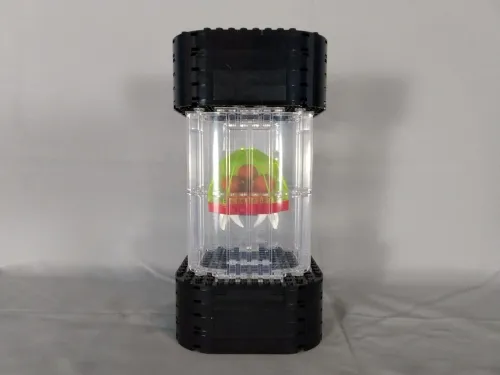
Book Review: Metroid Prime 1-3: A Visual Retrospective
It frequently seems that Metroid enthusiasts are longing for fresh treasures these days; even more so for admirers of Retro Studios’ Prime series. However, just a month prior to the eagerly awaited fourth mainline installment for Switch and Switch 2, you can acquire an absolutely breathtaking hardcover art book from Piggyback that encompasses the first three Metroid Prime games – with a bit more for Prime Remastered.
Removing the shrink wrap from the book, it becomes immediately clear how premium Metroid Prime 1-3: A Visual Retrospective truly is. Spanning 212 pages, the sleek black fabric cover showcases little more than a silhouette of Samus on the front, the primary Metroid emblem on the back, and the book’s title on the spine. These features gleam red when tilted in the light, and it appears quite sophisticated in reality.
Subscribe to Nintendo Life on YouTube837k
My sole concern regarding the cover is that it does attract small marks and smudges after extended handling. They wipe away easily, but it’s something to consider.
Upon delving into the book, it initiates with a rather brief foreword from series producer Kensuke Tanabe discussing his introduction to Retro Studios and how the team utilized its expertise to craft such remarkable games. Each title is examined in release order with a preliminary write-up from Retro Studios for every one (though the specific individual responsible remains unspecified).
Scattered throughout are additional comments from Tanabe; concise anecdotes regarding how he and Retro Studios collaborated on certain mechanics and designs. Much of it is fairly well-known, but there are certainly a few delightful nuggets that surprised me. Did you realize that Prime Remastered almost featured entirely new cutscenes, for instance? Well, now you do.
In addition to Tanabe’s writing, other breakout sections essentially duplicate text from the in-game Scan Visor logs, and as someone who is well-versed in the Prime games, I felt somewhat disheartened that Nintendo and Piggyback opted for this approach. These types of write-ups function adequately in the game itself, but I don’t need to read about how Sheegoth possesses a weak underbelly (wink-wink, utilize the Morph Ball Bomb) in an art book. Enlighten me about the design development!
This is a fairly noticeable flaw present throughout the entire book. While I certainly valued Tanabe’s perspectives, I believe there could have been much more detail provided by Retro Studios itself. What was the initial strategy in producing Prime 2‘s Luminoth? Why select this design over that one? What kinds of obstacles were surmounted?
As I admired the astounding concept art, numerous questions arose in my mind regarding the development process involved; unfortunately, most simply went unanswered. It’s crucial to note that many developers who contributed to the trilogy — including art director Todd Keller — are no longer with Retro, so I can comprehend why they weren’t directly involved.
Regarding the artwork itself, it is indeed remarkable. This is a comprehensive exploration of the Metroid Prime Trilogy and highlights nearly every significant element of the games, including Samus’ suits, her vessel, adversaries, bosses, locales, and more.
It’s a great deal, and it’s a genuine delight for series aficionados. I particularly enjoyed perusing some of the alternate designs for the Space Pirate foes, which appeared to adopt a more gaunt appearance compared to the final in-game models.
Of course, without Metroid Prime: Hunters, Pinball, and Federation Force, one might argue that this isn’t entirely as ‘complete’ as some would desire. Indeed, one of the most obvious exclusions is Sylux, the shadowy antagonist who primarily appears in Hunters and Federation Force. Their ship, however, does appear at the conclusion of Metroid Prime 3: Corruption, but even this is absent here. It’s a curious choice given the character’s significant presence in the marketing for Metroid Prime 4: Beyond.
Speaking of Beyond, I had wished for a brief reference to the upcoming sequel in the book, and while there are allusions to it in Tanabe’s notes (“Retro and our team at Nintendo will continue collaborating to the best of our ability to deliver new stories for fans to cherish!”), there are no visual clues. This was perhaps a touch optimistic on my part, and my hope is that there may be another volume in the future focused on the lengthy, rich development of Prime 4.
Despite my concerns and disappointments, Metroid Prime 1-3: A Visual Retrospective is a delightful book that Prime enthusiasts will undoubtedly relish – I certainly did. It’s the kind of visual banquet you’ll want to immerse yourself in repeatedly at a moment’s notice, so you can be assured it will take pride of place on my coffee table for the foreseeable future.
Thanks to Nintendo of America and Piggyback for providing the sample utilized in this review. The book will be released on 28th October 2025 for £39.99 / $49.99.
Please be aware that some external links on this page are affiliate links, which means if you click them and make a purchase we may earn a small percentage of the sale. Please review our FTC Disclosure for further details.
